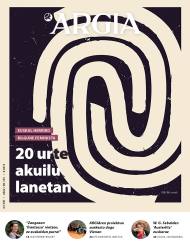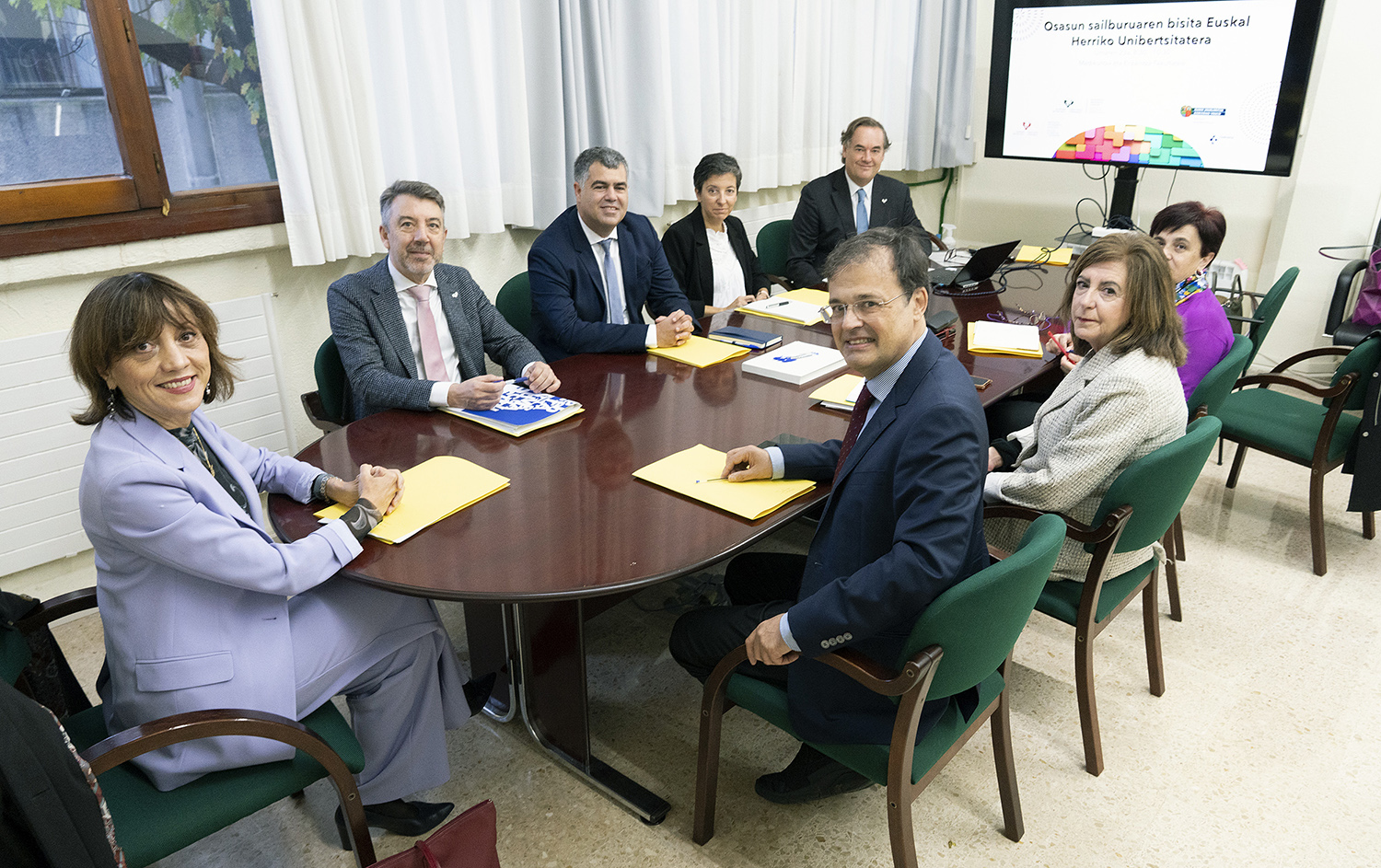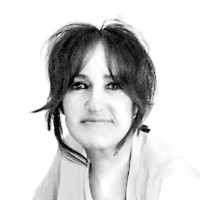“When I arrived at the School of Medicine in 1979, there were no bodies to practice”
- “Here are the ashes of generous people/wanting to leave the body to science./Here are recreated the dead/dreaming to help lives.” This can be read on a plate that welcomes attendees to the Forest of Life, behind the UPV campus in Leioa. We have talked to his promoter, Paco Doñate (Almansa, Albacete, 1948), professor of retired medicine.

What is the Forest of Life?
In essence, a funerary monument of modern art. It has a curious story. When I arrived at the School of Medicine in 1979, I was surprised that there were no bodies to use in some of the subjects taught in the first and second grades. There were only four bodies left, nothing else. So we started a press campaign for people to donate their bodies. It was a long-term issue, because we don't know when the donation you make today will die. I was from the University of Zaragoza and asked a professor there to lend a corpse. That's what we started doing.
Was the campaign successful?
Yes, it was very welcome. They immediately began to call from the nursing homes saying that some residents of the same had requested their transfer to the School of Medicine after the death. And so did the young donors. We established a condition to donate, everyone had to accept that after having used their body for teaching or research, they had to incinerate it. No one refused.
Why incinerate?
The preservation of a corpse requires embalming and embalming never rots. On the other hand, I was not in favor of leaving bodies in common graves, as it was until then. Because I thought they were giving tremendous service to society, and I think they had to be in a place that would give them social recognition.
This place is the Forest of Life, but it was not opened until 2003. Meanwhile, where were the ashes of those dead?
In my office. At first one, then two, then four -- and at last about 200. Visitors were impressed.
Get out of there. .jpg)
Yes. I wanted the university to make an effort and build a pantheon or another place to deposit the ashes. Finally, some donation was made, it became more sensitive to administration… and a nice amount was collected. I proposed to the then-rector, Pello Salaburu, to make a competition idea. It was almost 50 contestants and almost unanimously we chose what today is the Forest of Life.
We'll come back to the forest, but say, before we asked for donations, how did bodies get? Where did those four bodies that you mentioned at the beginning come from?
They were dead that no one claimed. By the way, I was correctly joining the remains and their ashes were the first ones I kept. One of them was a boy who came by boat to Bilbao. From there to the Faculty of Medicine and then to the Forest of Life.
What is the Forest like?
It consists of twenty steel trees and in the center there is an olive tree of about 2,000 years. Inside the steel trees there are gaps to deposit the ashes. Not all donors are in the Forest of Life, but most have stayed here.
How many ashes of bodies are there today?
Over 300 people. And the donors, the ones who are still alive, are over a thousand, because five or six years ago we had to say that we can no longer accept, for the time being.
How exactly are these bodies used?
Can you imagine an architect who's finished studying and has never seen a building? For doctors will spend their whole lives working with the human body and, in fact, with the sick human body, a degraded version of the healthy human body. Doctors need to know this body, how it is and how it works. The disease occurs when the form or function is changed.
Are healthy bodies studied?
Well, less healthy, because they've died. When we analyze, we confirm the diagnosis of the cause of death, or sometimes we deny it. However, the important thing is for children, future doctors, to see with their eye human anatomy.
Is it necessary to meet any special requirements to donate the corpse?
For example, not having died from an infectious disease, students, embalmers… to avoid the risk of contagion. Because legislation expressly excludes these donors. This is one of the few limits. No major deformations.
How long is each corpse used in college?
Usually for two years. They are stored for a long time, but their use deteriorates. They are therefore usually incinerated after two years of use. And then they move to the Forest of Life, at an annual ceremony.
Organ donation by default
“When we started asking for cadaver donors [in the early 1980s] the topic of organ transplants was not as advanced as today, but when a young man came to us we encouraged him to donate organs and explained what to do for it. Understandably, saving lives gave him more priority than training future doctors, although they would also have saved lives.”
Washington (EE.UU. ), 1807. The US Constitution banned transatlantic slave trade. This does not mean that slavery has been abolished, but that the main source of the slaves has been interrupted. Thus, slave women became the only way to “produce” new slaves.
So in 1845, in... [+]
What blew me a lot is the way some doctors talk to the patient. They talk to us about pain as if we were children. As I have had two kidney transplants, I know what I mean: among other things, I have had a tube inside my penis. Because of the anesthesia, I didn't feel how I got... [+]
Today I have come to start with my words.
Four years!
I've taken four years to get my life back.
Four years also lived to flee the prison.
Four years… In silence… Just… Leaving aside the life of the past… To understand the functioning of my different mind and to... [+]
Lack of good doctors for a high middle grade policy. This policy has ensured that very few young people have reached the medical career and the MIR has further removed people from that career.
And there are few Basque doctors because the knowledge of Euskera in this profession... [+]
Rainy red mornings, red blondes. Little with the Aramaio train and soon wind turbines will be installed, destroying the mountains. The wind of the river, from Vitoria, leads us along the same path: the river. Infrastructures yes, all we want, but not socio-health care... [+]
We are now talking more about mental health, psychological well-being and its impact on our quality of life. It is a source of joy, because it helps to get the subject out of the closet, because by showing that the pain we all have (and not a few) the discomfort normalizes and... [+]
Haur eta gazteen egoera emozional eta psikologiko txarra dela-eta, irakasleak gaindituta daudela eta ikastetxe bakoitzean psikologo bat ezarri beharko litzatekeela aldarrikatzen du mugimendu batek. Hari horri tiraka, jakin nahi izan dugu zein den pandemiak eskoletan utzi duen... [+]





















